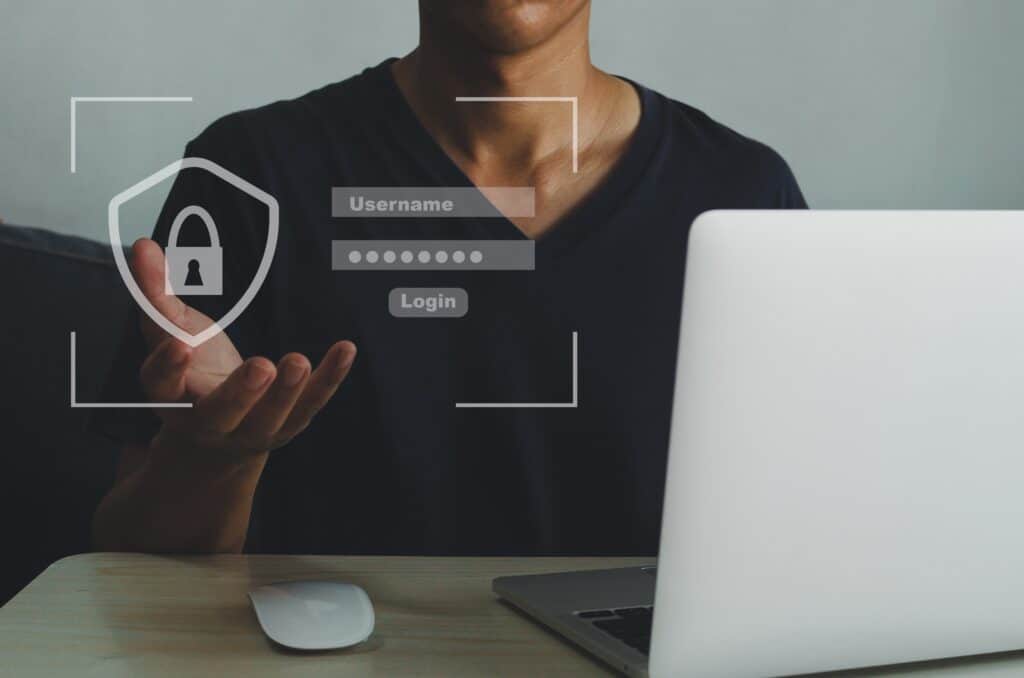- Cyberstalking involves using digital platforms to harass, intimidate, or harm others, often anonymously, making it difficult to escape or trace the perpetrator.
- Anyone can be a victim, but teenagers, young adults, and women are particularly vulnerable. The psychological impact includes anxiety, depression, isolation, trust issues, and a decline in work or academic performance.
- Protect yourself by limiting the personal information you share online, strengthening privacy settings, using strong passwords, being cautious with online relationships, monitoring your digital footprint, and avoiding engagement with harassers.
The internet has become such an ingrained part of our lives that we sometimes forget just how vast it is. Because of its size and complexity, harmful behaviors have a place to fester. Among the most concerning is cyberstalking. Cyberstalking can happen to anyone, anywhere, and it’s important to know its facets so that you can protect yourself from becoming a victim.
What Is Cyberstalking?
Cyberstalking is a form of harassment that occurs when someone uses digital platforms to monitor, intimidate, threaten, or otherwise harm another person. Unlike traditional stalking, which requires physical proximity, cyberstalking happens entirely online, making it difficult for the victim to escape the harassment. Cyberstalkers often exploit the anonymity of the internet to hide their identities, which can make it challenging to trace them or bring them to justice.
Cyberstalking can take many forms, such as sending threatening or obscene messages, spreading false information, hacking accounts, monitoring online activity, and even impersonation.
Who Is at Risk?
One of the most concerning aspects of cyberstalking is that it can happen to anyone. However, certain groups are at higher risk. Teenagers and young adults are particularly vulnerable to cyberstalking due to their high levels of online activity and willingness to share personal information online. Women are also more likely than men to be targeted by cyberstalkers, particularly in cases of domestic abuse or after a relationship has ended.
The Impact of Cyberstalking
The constant fear and anxiety caused by being watched or harassed can lead to a range of emotional and psychological issues, including the following:
- Anxiety and Depression: The stress of being cyberstalked can lead to severe anxiety and depression, affecting a victim’s mental health and overall well-being.
- Isolation: Cyberstalking can lead to feelings of isolation, as victims may withdraw from social activities or cut off communication with friends and family to protect themselves.
- Trust Issues: Victims may find it difficult to trust others, especially online, after experiencing cyberstalking.
- Decline in Work or Academic Performance: The emotional toll of cyberstalking can lead to a decline in performance at work or school, as victims may find it hard to concentrate or stay motivated.
How to Protect Yourself from Cyberstalking
While cyberstalking is a serious threat, there are steps you can take to protect yourself and reduce your risk of becoming a victim. Here are some practical tips to help you stay safe online:
Be Cautious of Sharing Personal Information
Avoid posting your home address, phone number, or other sensitive details on social media or public forums. Even seemingly harmless information, like your daily routine or favorite places to visit, can be used by a cyberstalker to track your movements or learn more about you.
Strengthen Your Privacy Settings
Regularly review and adjust your privacy settings on social media platforms to limit who can see your posts and personal information. Make sure that your profiles are set to private so that only your friends and followers can view your content. This can help reduce the risk of a cyberstalker gaining access to your information.
Use Strong, Unique Passwords
Protect your online accounts by using strong, unique passwords for each one. A good password should be at least 12 characters long and include a mix of letters, numbers, and special characters. Avoid using easily guessed information, like your name or birthdate, in your passwords. Additionally, enable multi-factor authentication (MFA) wherever possible for added security.
Be Wary of Online Relationships
Building relationships online can be tricky, especially when it comes to determining someone’s true intentions. Be cautious about forming close connections with people you’ve only met online, and take your time getting to know them before sharing personal details or agreeing to meet in person. If someone’s behavior makes you uncomfortable or seems too good to be true, trust your instincts and proceed with caution.
Monitor Your Digital Footprint
Regularly check what information is available about you online by searching your name on search engines. This can help you identify any potential risks, such as personal information that has been leaked or shared without your consent. If you find something concerning, take steps to have the content removed or to secure your accounts.
Avoid Responding to Harassment
If you become the target of cyberstalking, it’s important to avoid responding to the harasser. Engaging with a cyberstalker can often escalate the situation and give them the attention they crave. Instead, block the user, report their behavior to the platform, and keep a record of any harassing messages or actions.
Recognizing the Signs of Cyberstalking
Being aware of the signs of cyberstalking can help you take action early if you suspect you’re being targeted. Here are some red flags to watch out for:
- Unwanted Communication: Repeated, unsolicited messages, emails, or social media interactions, especially if they continue after you’ve asked the person to stop.
- Monitoring and Tracking: Someone seems to know your whereabouts or activities without you having shared that information.
- False Rumors: You discover that someone is spreading false or harmful information about you online.
- Hacking Attempts: You receive alerts about suspicious activity on your online accounts or notice that your passwords have been changed without your knowledge.
- Impersonation: Someone creates fake profiles pretending to be you or using your photos and personal information to deceive others.
What to Do If You’re Being Cyberstalked
If you believe you’re a victim of cyberstalking, it’s important to take steps to protect yourself and seek help. Start by immediately blocking the stalker on all platforms and reporting their behavior to the site administrators. Keep a record of all communications and any evidence of harassment as well. This documentation is extremely helpful if you need to involve law enforcement.
If you suspect that your accounts have been compromised, change your passwords immediately and enable two-factor authentication. Don’t hesitate to reach out to trusted friends, family, or a counselor for support during this time too. Talking about your experience can help you process what’s happening and make informed decisions about your next steps.
Lastly, if the harassment persists or you feel that your safety is in immediate danger, contact your local law enforcement agency. They can help you take legal action against the cyberstalker.
At CMIT Solutions of SW Jacksonville, we take cybersecurity seriously. If your business requires cybersecurity or IT solutions, reach out to us today; we’ll help keep you—and your data—safe.




